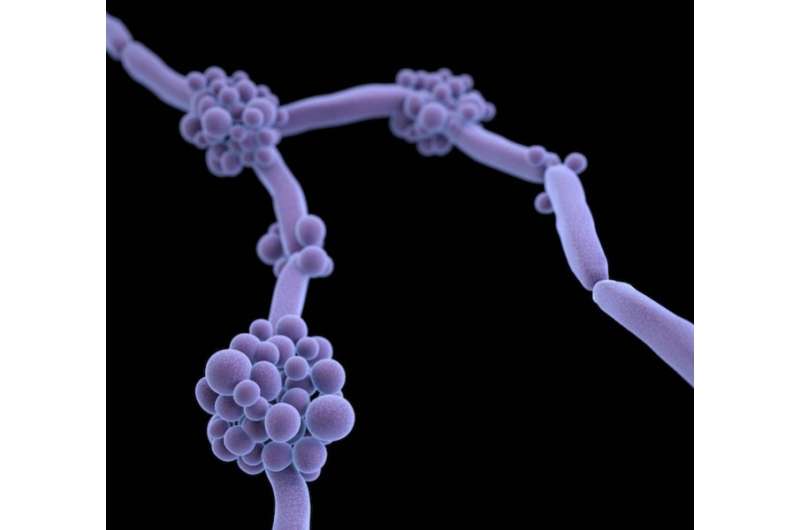Combination of drugs may combat deadly drug-resistant fungus

As health officials in New Jersey, Illinois and New York State scramble to contain the spread of a highly infectious and deadly fungus, microbiologists at Beth Israel Deaconess Medical Center (BIDMC) have shown that a combination of anti-fungal and anti-bacterial medications may be an effective weapon against the recently discovered multidrug resistant, Candida auris (C. auris).
BIDMC's Thea Brennan-Krohn, MD, presented the findings Friday, June 21, 2019, at ASM Microbe 2019, the annual meeting of the American Society for Microbiology.
"Few treatment options are available for patients infected with Candida auris, which causes invasive, life-threatening infections, usually in patients who are already critically ill or have compromised immune systems," said Brennan-Krohn, MD, a post-doctoral research fellow in the lab of James E. Kirby, MD, Director of the Clinical Microbiology Laboratory at BIDMC. "It has an alarming propensity to spread from patient to patient and survive on surfaces in rooms, resulting in hospital outbreaks."
First discovered in Japan in 2009, C. auris has been detected in patients in more than 20 countries and, as of April 2019, has sickened 643 Americans in 11 U.S. states, according to the U.S. Centers for Disease Control and Prevention (CDC). At present, most cases of C. auris are resistant to at least one antifungal drug, with about a third impervious to two or more.
In order to identify new treatment approaches for C. auris, Brennan-Krohn and colleagues used a modified inkjet printer—a method pioneered for rapid and uniform antimicrobial screening in the Kirby lab—to test three antifungal drugs, one from each of the main classes of antifungals, combined with two antibacterial antibiotics, which by themselves have no activity against fungal infections.
Using the inkjet technology to dispense uniform samples of C. auris into each of the 96 wells in a standard lab testing plate, Brennan-Krohn tested 10 combinations against 10 strains of C. auris, a painstaking process that would have taken at least 50 hours if done by hand. It took less than two hours in total using the inkjet dispenser for Brennan-Krohn to find three novel combinations of antifungal and antibacterial drugs that demonstrated activity against this insidious new pathogen.
Using a different method known as a time-kill test, Brennan-Krohn showed that two of the antibacterial-antifungal treatments not only prevented C. auris from growing but also succeeded in killing some of the strains tested.
While the drugs have not yet been tested in combination in humans infected with C. auris, all of the drugs Brennan-Krohn evaluated—the antifungals amphotericin and caspofungin and the antibacterials minocycline and rifampin—are FDA-approved antibiotics, currently in use patients with a variety of infections. If the drugs' combined power to inhibit or kill C. auris that they demonstrated in the lab is confirmed in studies in humans, it could mean physicians caring for patients with C. auris infections already have access to effective treatment options.

















